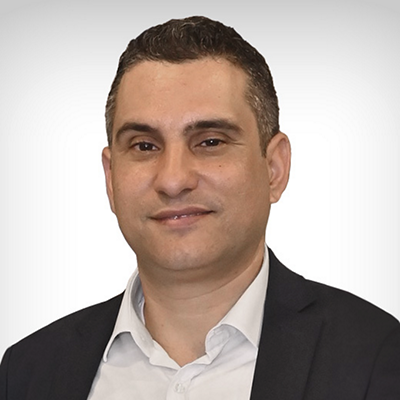Cloud native EDA tools & pre-optimized hardware platforms
Synopsys Cloud
Unlimited access to EDA software licenses on-demand
With increasingly complex chip designs, multiple large-scale projects, and shorter schedules, engineers worldwide have already started to experience the numerous productivity and time-to-market benefits of moving their electronic design automation (EDA) workloads to the cloud. Jobs that previously took several weeks to finish can now be completed within hours, thanks to the on-demand access of advanced compute and storage infrastructure 24×7.
At this year’s SNUG Silicon Valley 2022, cloud was a much-talked-about subject. Held virtually on March 30 and 31, the conference featured a multitude of interactive formats, including panel discussions, demos, and technical presentations. As typical with SNUG events, the conference sparked engaging conversations around the latest cloud trends, the future of cloud for EDA, and its many benefits that address the demand for ever-increasing compute resources.
As cloud computing continues to be pervasive despite a tight supply chain environment, read on for the top four cloud highlights discussed at the conference.
1. Taking EDA to the Cloud
In the spotlight panel discussion, EDA on Cloud: Yesterday’s Pipe Dream is Today’s Reality, industry experts from AMD, GlobalFoundries, Marvell, Tanzanite Silicon Solutions, and Synopsys dissected the various pros and cons of EDA workloads in the cloud, the need for a frictionless “lift and shift” experience for teams transitioning, and why change management, cost, and data management will play important roles as teams look to achieve the desired scale and acceleration from cloud environments.
A few years ago, customers were just getting used to the concept of EDA on the cloud and would only move a few workloads at a time to validate the effort and costs involved. Fast forward to today, many customers opt to have all of their chip design projects on cloud or burst to cloud for peak needs. From established design houses to startups “born in the cloud,” both camps are driven by the many benefits that the cloud provides — faster time to results, enhanced quality of results, and better cost of results — without having to invest extensively.
“Any modern software company that starts their journey today is already born in the cloud, develops software on GitHub, uses DevOps to establish operations, and has tie-ups with cloud service providers,” said Shankar Krishnamoorthy, general manager, Silicon Realization Group at Synopsys. “With the latest announcement of Synopsys Cloud, our vision is to equip every one of these new hardware design teams with the best EDA workflows and reference flows for all desired applications so that they don’t need to worry about these conventional barriers of entry.”
What will the future look like? The five panelists reached a unanimous consensus that despite the evolution of the cloud being different for each company, cloud is here to stay … and EDA is perhaps one of the many ways that teams can make the most of the larger cloud infrastructure.
2. Harnessing the Cloud to Rapidly Scale Designs
Whether designers are catching up on an extensive project schedule with peak workload demands or getting a new design to market faster, teams want the flexibility to scale while having unlimited access to EDA licenses. As a company born in the cloud, Astera Labs’ vision to remove performance bottlenecks in data center applications aligned with the various benefits of using Synopsys Cloud.
Jitendra Mohan, CEO and co-founder of Astera Labs, walked attendees through the company’s recent experience designing connectivity solutions for data-centric systems in the AWS public cloud environment and how the combination of Synopsys solutions and the cloud helped build a competitive advantage. From the inner workings of the AWS cloud infrastructure setup, EDA licensing for cloud scale, the chosen front-end simulation methodology, and the back-end design methodology, Mohan shared valuable insights on how Astera successfully delivered multiple SoCs using a cloud-based development flow to achieve high-quality tapeouts in record development times.
He also gave viewers a glimpse of Astera’s experience in the last year to depict how compute footprint has scaled with the cloud, using different spot instances to manage compute costs as well as a graphical representation of the daily license usage over a two-year period. Mohan concluded the session with an engaging Q&A round, attesting to the success of EDA on the cloud and how the partnership with Synopsys and AWS has been key to the company’s success.

3. VCS Hybrid Cloud Implementation Using Pure Storage on Microsoft Azure
One of the most attractive uses of the cloud for chip development is bursting VCS workloads. “Bursting” to the cloud is all about dynamic deployment of applications and allows customers to leverage the huge scale of compute that the cloud offers. While hosting design data completely on the cloud is simpler and more efficient, many customers want a hybrid scenario where they can store data on a wholly owned storage solution while leveraging Cloud as a Service (CaaS).
Microsoft Azure has worked with Pure Storage and Equinix to offer such a colocation hybrid solution for customers to gain the desired performance for EDA workloads. On Day 2 of SNUG 2022, Microsoft’s senior program manager, Raymond Meng-Ru Tsai, and Pure Storage’s technical director, Bikash Roy Choudhury, led a joint session to provide attendees with an in-depth perspective of running the industry’s highest performance simulation solution, Synopsys VCS® via Microsoft Azure and Pure Storage FlashBlade® at scale. They discussed best practices to verify parameters such as completion time, storage throughput patterns, and network route capabilities. This discussion also provided attendees with granular details of a tried-and-tested method to store data on a wholly owned FlashBlade device located in an Equinix data center while being connected to the Azure cloud for compute.

4. Feeling Secure on the Cloud
Recent advancements and innovation in the cloud have accelerated the adoption of cloud computing in semiconductor design. To enable such adoption, a key pillar that needs to be kept top of mind is cloud security. Cloud service providers operate under a shared security responsibility model, where the provider is responsible for securing the underlying cloud infrastructure.
Wagner Nascimento, vice president and CISO at Synopsys, and Sudesh Gadewar, group director, security architecture and engineering at Synopsys, walked viewers through an in-depth session around Synopsys’ cloud security approach as it relates to the recent announcement of Synopsys Cloud.
With the supply-strained semiconductor industry increasingly challenged to deliver chips enabling advanced functionality and efficiency, Nascimento said, “We followed three fundamental guiding principles at all stages to deliver an in-depth defense approach for Synopsys Cloud: confidentially, integrity, and availability.”
Detailing the behind-the-scenes workings of the platform’s infrastructure and data security, multi-level identity and access management, application security as well as logging, monitoring, and reporting an incident via Security information and Event Management (SIEM), both Gadewar and Nascimento stressed the importance of baking in security at the very inception of any project.
Gadewar gave viewers a glimpse of how Synopsys Cloud addresses security across all levels of the stack, from when it’s routed through a web application firewall until the final stage of data management. He emphasized the priority of protecting customer data while allowing Synopsys Cloud to be flexible to meet varying needs.

All in all, this year’s cloud track at SNUG reminded attendees of the integral role that cloud will play in the next phase of chip design and development, creating endless possibilities for companies like Synopsys to reimagine the future of chip design on the cloud.
















